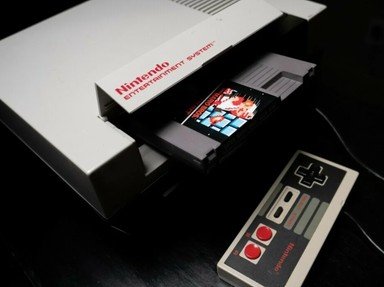Quiz Answer Key and Fun Facts
1. Game 100: Nintendo released "Ice Hockey" in 1988. Originally Nintendo released the game as Famicom Disk System title in Japan with a different team line up. What team is exclusive to the US version of "Ice Hockey"?
2. Game 99: Konami released "Rush'n Attack" in 1987. What was the Japanese name for this title?
3. Game 98: "Teenage Mutant Ninja Turtles" is rather infamous for the water stage where you must guide the turtles through an insanely challenging swimming level where you must disarm explosives before the bad guys blow up a dam. How much time do you have to disarm the bombs before the dam is blown to smithereens?
4. Game 97: "Astyanax" is a side scroller staring a protagonist who must save the princess (sound familiar?). What realm is Astyanax set in?
5. Game 96: Chronologically, the events of "Dragon Warrior III" occur before "Dragon Warrior".
6. Game 95: We come to the first "Mega Man" game on the list, "Mega Man 4". In 1991, early screen shots of "Mega Man 4" were published in one of the gaming magazines. Notable for featuring a deleted "Sphinx" mini-boss, these screenshots in many ways appear quite different from the final product. What gaming magazine published these photos?
7. Game 94: "Kickle Cubicle" is a puzzle game in the style of Hal's "Adventures of Lolo". There are four main islands that Kickle must advance through in his advanced to save the Princess. What is the third island he will encounter?
8. Game 93: We come to one of the greatest mostly unknown NES titles ever: "Little Samson". You have the ability to play as four characters: Lickle (a human), Dragon, Golem, and what other creature?
9. Game 92: This game came in at 92 on IGN's list and features digital vocals during the intro scene and during the game, something quite rare in NES titles. What's the title?
10. Game 91: It was only in "Mario Bros." that Mario became a plumber. During the "Donkey Kong" era, Mario had a different profession. What was Mario's chosen profession before becoming a plumber?
Source: Author
berenlazarus
This quiz was reviewed by FunTrivia editor
kyleisalive before going online.
Any errors found in FunTrivia content are routinely corrected through our feedback system.
